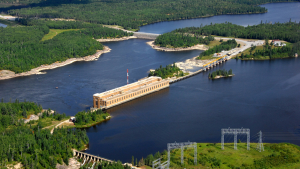After retreating by -1.0% in 2015 and by a further -0.5% in 2016, the Saskatchewan economy rebounded by +2.8% in 2017 largely on account of a price-driven increase in oil exports and a concomitant strengthening in exports of potash.
Despite this stronger pattern of growth, total employment in the province in 2017 was little changed with a gain in hiring of 5,200 jobs in the public sector almost offset by a 4,100 drop in private sector employment.
Given this very slight change in total employment, it is not surprising that, for 2017 as a whole, Saskatchewan’s unemployment rate remained essentially unchanged at 6.3%.
As the picture of Saskatchewan’s recent economic performance comes into focus, it is clear that after a strong showing in 2017, the Wheat Province lost a considerable amount of momentum during the first half of this year. Factors contributing to this slower pace of growth include a flattening of exports, no job growth, stalled consumer spending and a sharp drop in residential construction.
Turning first to exports, while year-to-date foreign sales of petroleum products (+11%) and potash (+8.5%) have been positive, these gains have been completely offset by price-induced declines in exports of canola (-19%), peas (-49% ) and lentils (-47.3%).
During the first six months of the year, total employment in the province was essentially unchanged compared to the comparable period in 2017. Looking forward, two indicators suggest hiring plans have cooled recently. According to the Canadian Federation of Independent Business (CFIB), private sector hiring plans contracted in June. Furthermore, the CFIB’s Business Barometer Index for the province has tumbled by 17.2 points since March to an 18-year low of 44.8.
Given the province’s depressed job market, it is not surprising that Saskatchewan consumers appear to have pressed the pause button on their spending. Since the beginning of the year, retail sales in the province are down by just under 1% y/y largely due to a 2.3% y/y decline in spending on motor vehicles and parts.
The weak fundamentals that flattened consumer spending also appear to have depressed housing demand, causing year-to-date home sales to drop by 7.5%. Driven by this slowdown in sales, partially the result of the more restrictive mortgage lending regulation introduced by OSFI at the beginning of the year, average house prices are down by -2.8% year to date while the months’ supply of homes for sale, at 10.3 in June, is just slightly below the 15-year high of 10.7 reached in May.
The effects of this slowdown in existing home sales has clearly depressed new residential construction in the province. Housing starts during the first half of this year are off (-23% ytd) compared to the first half of 2017. Given this weak first half, we expect housing starts for the year as a whole to total between 3,000 and 3,500 units compared to 4,800 and 4,900 in 2016 and 2017 respectively.
Despite a steady gradual firming in oil prices over the past two years, the value of total capital spending in Saskatchewan is projected to contract by 2.4% this year following a slightly larger 2.8% decline in 2016. According to Statistics Canada, this (the fourth consecutive) retreat in capital spending intentions is largely due to a 7.4% drop in mining, quarrying and oil and gas extraction, which now accounts for 37% of the province’s total capital spending, down from 55% in 2013.
Industries planning to boost their capital spending this year include manufacturing (+62%) transportation and warehousing (+14.6%), public administration (+6%) and education services (+5.9%). This increase in manufacturing capex intentions appears consistent with the year-to-date gains in industrial and commercial building approvals which more than offset a drop in institutional project approvals.
Although the Saskatchewan economy continues to face significant challenges, a number of positives should help to underpin its growth during the remainder of this year and into 2019.
First, although the prospects for the province’s agriculture industry are dependent on weather and market-determined crop prices, after a drought-depressed 2017, the most recent Saskatchewan Crop Report notes that the majority of crops are within their normal range of development. Having said this, weakening prices for most of the province’s field crops temper the agricultural sector’s prospects over the near term. Second, following a slow start, the province’s manufacturing sector appears to be moving into a higher gear due to solid gains in sales of both non-durables (+33% y/y) and durables (+25% y/y). Finally, despite the uncertainty regarding the future of Canada/U.S. trade, Saskatchewan is, according to the Fraser Institute’s 2017 Annual Survey of Mining Companies, the best place in Canada and the second best jurisdiction in the world for mining companies to make new investments.
Real* Gross Domestic Product (GDP) Growth — Saskatchewan vs Canada

Chart: ConstructConnect — CanaData.











Recent Comments
comments for this post are closed